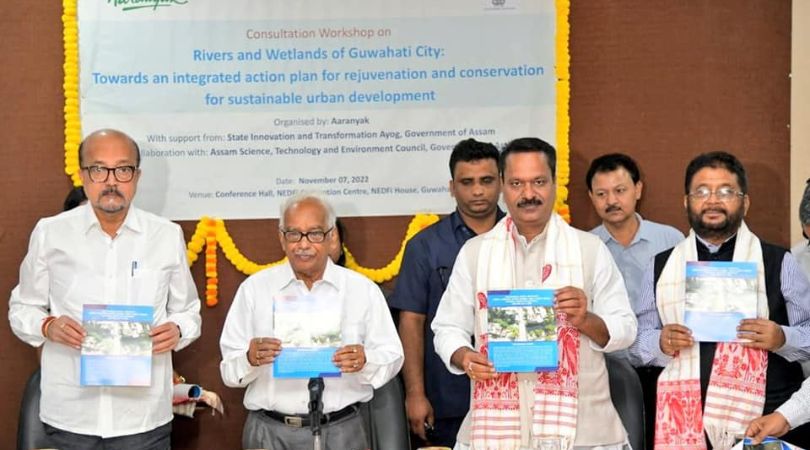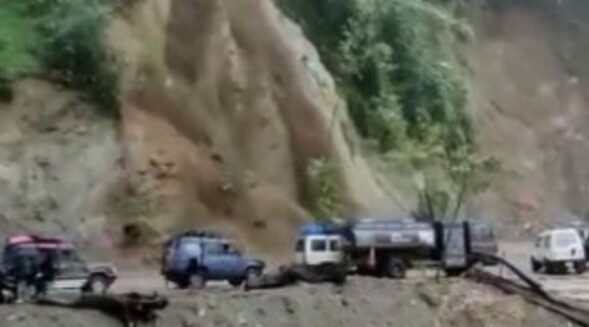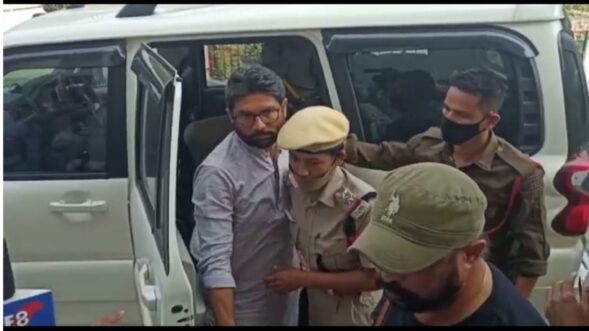
GUWAHATI:
The Assam government is set to implement an ambitious project to carry waste from Bahini, Basistha and Bharalu and other water bodies through an underground pipe to save the population of Guwahati city from a calamity, Assam Housing and Urban Affairs Minister, Ashok Singhal, said on November 8.
The project will be implemented by Guwahati Metropolitan Drinking Water and Sewerage Board (GMDWSB) with financial assistance from Japan International Cooperation Agency (JICA).
“The process of execution of the project is on. The government will invite tender for the construction of an underground pipe at the end of this fiscal. If this project is completed, 50 to 70 per cent of waste from these water bodies can be processed through an underground pipe,” Singhal said while addressing a day-long consultation workshop on ‘Rivers and Wetlands of Guwahati City: Towards an integrated action plan for rejuvenation, conservation, and sustainable urban development’ organised by Aaranayak at the NEDFi House.
Singhal sought cooperation from all stakeholders for rejuvenating and conserving the dying as well as polluted rivers and water bodies of Guwahati.
Singhal appreciated the initiative of the home-grown environmental organisation, Aaranyak and pointed out that the city’s haphazard development over the years is the root cause of the problem because practically no stream has been left unpolluted and no wetlands have been left un-encroached.
The minister said the state government was working towards rejuvenating all these wetlands and hoped for the support of all stakeholders.
He assured that 50-60 per cent of the municipal waste will be processed through a project in the coming year.
The minister stated that the state government is keen on preserving the wetlands and that steps had been taken by the government to rejuvenate Deepor Beel and Silsako Beel in the city.
According to the PM’s directive, water bodies throughout the country must be protected. Hopefully, this workshop will result in sustainable conservation of water bodies in and around the city and help restore them, the minister stated.
Assam’s capital city, Guwahati, serves as a gateway not only to the NE region but also to Southeast Asia, as reflected in the Union government’s Act East policy.
With a total area of more than 328 square kilometres and a population of more than 10 lakh, it is one of the fastest-growing cities in the country.
Because of its location on the banks of the Brahmaputra, one of the largest rivers in the world, and its landscape of hills, hillocks, valleys, and water bodies, it has a unique natural physiography.
The workshop was supported by the State Innovation and Transformation Ayog (SITA) and organised in collaboration with the Assam Science Technology and Environment Council (ASTEC).
In his address, SITA vice chairman Ramen Deka said human beings have destroyed nature and wildlife habitats, and it’s their responsibility now to restore and conserve them.
Due to pollution and encroachment in the city, the Bharalu river has been reduced to a mere polluted drain, and the problem of flash floods in the city has aggravated due to garbage-filled water bodies in many more wetlands, he said.
In his address, environmental scientist Dr Partha Jyoti Das, head of Aaranyak’s Water, Climate and Hazard Division (WATCH), said, “The Bharalu, Mora Bharalu, Basistha, Bahini, Pamohi, Khanajan, Kalmoni, and Bondajan are some of the prominent rivers and streams that drain the cityscape. The Deepar Beel, Borsola, Sarusola and Silsako are the main wetlands that act as stormwater reservoirs of the city. It is noteworthy that several of these water bodies are hydrologically connected meaning they carry and contribute water to one another.”
“In the case of some wetlands, the inter-connecting channels have disappeared due to unpragmatic constructions and land development. Rapid urban growth and development accompanied by a significant rise in population have dramatically transformed the city’s landscape, environment, natural resources, demography, and society in the last 50 years,” Das said.
“Unplanned growth of the city, both in horizontal and vertical directions has resulted in tremendous pressure on its natural resources and environment which is observed in widespread encroachment and human occupation of the fragile hill slopes, reserved forests, and decimation of water bodies. The increasing environmental degeneration of the city has led to the slow and steady death of many of its rivers, streams, wetlands, and natural stormwater reservoirs. The urban water bodies of the city are facing grave threats from pollution, ecological degradation, and physical decimation,” he stated
Prof PC Bhattacharya, eminent ecologist, Dhruba Prasad Baishya, co-vice chairman, SITA, Dr Shantanu Dutta, member secretary, Assam Pollution Control Board, Prof Arup Kumar Mishra, IIT Guwahati and Prof Ajay S Kalamadhad from IIT Guwahati, MD Adhikary, senior environmental scientist, PCBA, Dr Bidyut Bikash Sharma, Department of Environmental Science, Gauhati University, PP Changkakati, former secretary, water resources, shared their valuable opinions, research findings, and possible solutions at the workshop.
Ward councillors from Guwahati Municipal Corporation, NGOs and citizens also attended and contributed to the workshop for future possible outcomes.






